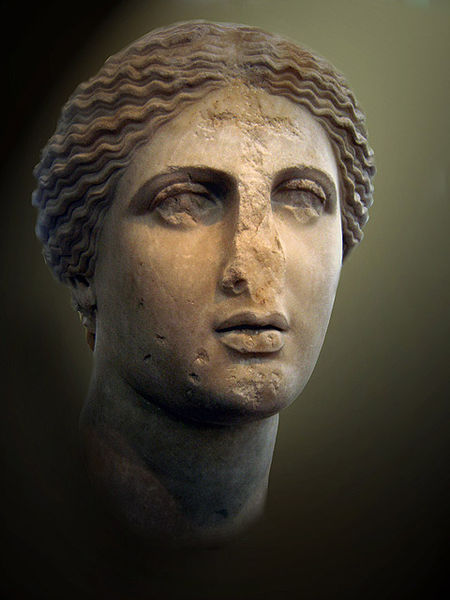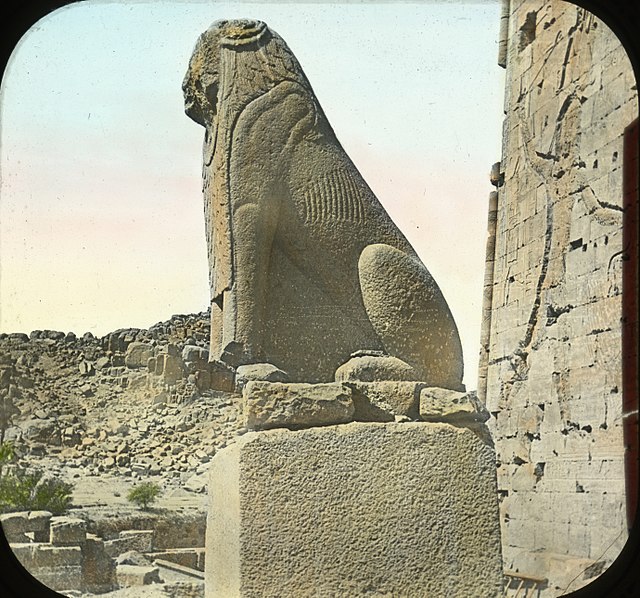Anti-paganism policies of the early Byzantine Empire
The anti-paganism policies of the early Byzantine Empire ranged from 395 till 567. Anti-paganism laws were enacted by the Byzantine Emperors Arcadius, Honorius, Theodosius II, Marcian and Leo I the Thracian. They reiterated previous legal bans, especially on pagan religious rites and sacrifices and increased the penalties for their practice. The pagan religions had still many followers but they were increasingly obliged to keep under cover to formally comply with the edicts. Significant support for paganism was present among Roman nobles, senators, magistrates, imperial palace officers, and other officials.
Head of Aphrodite, 1st century AD copy of an original by Praxiteles. Christian cross defacing the chin and forehead. Found in the Agora of Athens. National Archaeological Museum in Athens.
The Philae temple complex is an island-based temple complex in the reservoir of the Aswan Low Dam, downstream of the Aswan Dam and Lake Nasser, Egypt.
A sphinx in Philae
A relief from the so-called "Meroitic chamber" at Philae, showing in two processions a Kushite diplomatic mission sent by King Talakhidamani, perhaps around 260 or later, around 300.
Christian altar in the first hypostyle hall at Philae temple complex
Philae flooded by the Aswan Low Dam in 1906.





